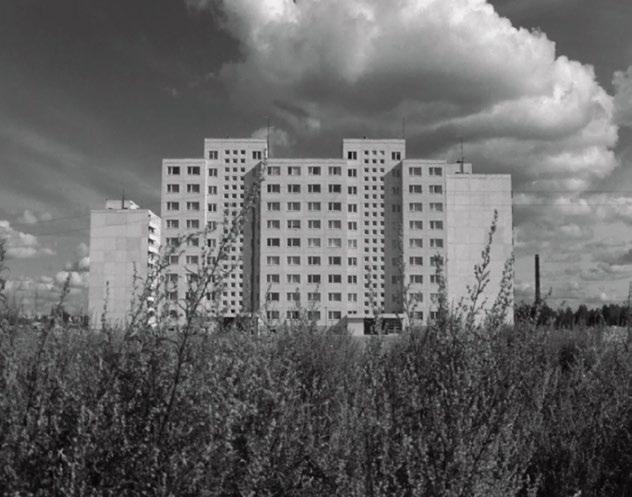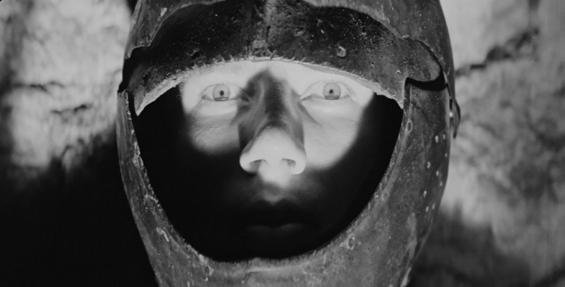
4 minute read
CLASSICS
Day timeless? The theme of the film – Soviet chaos, the everyday absurd and tacky kitsch have largely lost their social meaning, and at first glance, Midsummer’s Day shouldn’t offer much in the way of recognition or identification with today’s society or current issues. /—/ Midsummer’s Day’s tone is not pessimistic, although, logically, it should be. The characters are portrayed with pleasure and aplomb. Looking at them today, they rather resemble some aliens or Soviet cartoon characters than examples of the aggressively vulgar Homo Sovieticus.” 5

Tristan Priimägi has said: “Big Midsummer Day’s celebrations have been recorded in Pirita and Õismäe on two consecutive years. Seemingly they are not different from any mass events – lots of people, noise, and activities – but Sööt’s sensitive eye for detail singles out colourful and characteristic nuances in this mess of Babylon, turning feast into farce – a Soviet soft-version of Hieronymus Bosch’s “The Garden of Earthly Delights.”.”6
Both writers have understood the essence of Sööt’s films – his warm sense of humour and non-judgemental look at life. Sööt creates an opportunity for everyone to judge the characters according to their own degree of depravity, while refraining from this himself as an author as much as possible.
Wedding Pictures from the next year is memorable too: we see two wedding parties in all of their pain and glory. Filmmaker Karol Ansip has successfully drawn a parallel between Wedding Pictures and Midsummer’s Day. “Wedding Pictures, much like Midsummer’s Day, shows peculiar contrasts: folk dances and games versus hot disco; a Soviet way of conducting business and Viru Valge vodka; Fassbinder-ish 1970s design and eternal human comedy.” 7
1980s And 1990s
Sööt’s most noteworthy works of the next decades are Reporter (1981), Year of the Dragon (1988), Year of the Horse (1991), and Escape (1991).
Midsummer's Day tells about the celebration of Estonia's most important holidays in urban conditions. The film, recorded with a hidden camera, vividly depicts the change in the traditional content of Midsummer's Day.
Reporter is a journalistic portrait about hotshot radio reporter Feliks Leet, filmed with Sööt’s trademark warm humour. Reporter is different from the majority of Sööt’s works, because the author is forced to interfere with the events on the screen and we are presented with a rare opportunity to hear his voice asking questions. In a film about a radio reporter, whose main job is to ask questions and to talk a lot, this approach feels completely natural, although it probably doesn’t come naturally to Sööt himself.
Year of the Dragon and Year of the Horse are relevant because they freeze-frame a certain period in time; the final years and collapse of the Soviet Union from the perspective of a small nation whose eyes have always been turned to the West. Year of the Dragon is rife with contradiction – “In the world of Year of the Dragon, grand and petty, serious and comical, noble and shallow, reality and illusion exist side by side here as equals”.8 It is the year 1987 and nationwide protests against mining phosphorite in Estonia grow into a dream of independence. A couple of years later this dream cannot be quashed by the wavering giant, i.e. the Soviet Union any longer, and Estonia can consider itself an independent state once again. These crucial events of 1987 have been captured by Sööt’s camera for all time. Year of the Horse takes place already in 1990 when the Soviet tanks are moving on Tallinn, but Estonians manage to make the Soviet Union recognize the sovereignty of Estonia without any human casualties. It is the year of becoming independent again.
6, 1997.

Escape is a film that shows courage to address uncomfortable themes in an already more liberal climate. It is a story about Estonian boat refugees, fleeing to Sweden and Germany from the Soviet Army in 1943–1944. Many of them were forced to return to the USSR by Sweden once the war was over. A heartbreaking film about a topic that doesn’t probably have much traction in the liberal Nordic country.
In addition to the films mentioned, Sööt makes some of his most remarkable portraits about cultural figures in this decade and continues to film sports documentaries in his modest manner. Watching An- dres Sööt’s documentaries as an Estonian, gives one a nice reassurance that even the fragile existence during the Soviet era has been depicted in a sort of benevolent and positive light by Sööt.
1988 was an exceptional year in the life of Estonia. To everyone's surprise, the national flag and symbols were allowed to be used. Sööt's documentary tells the story of that year's events in Estonia.
And positivity, not towards the authorities of the time who allowed him to make films, but a hopeful and human glance into the better future that reflects in the eyes, words, and deeds of his characters. Anyone, who is interested in the events of the past 60 years in the current NATO and European Union border state Estonia, might gain from searching out Andres Sööt’s films. These are a good starting point to gain a better understanding of our tiny nation, and where we come from. EF
Must See Films
by Andres Sööt
1. Rocky Lullaby (1964)

2. Ruhnu (1965)

3. Tallinn Secrets (1967)
4. 511 Best Photos of Mars (1968)
5. White Enderby Land (1969)
6. Midsummer’s Day (1978)

7. A Dream (1978)
8. Memory (1984)
9. Year of the Dragon (1988)
10. Year of the Horse (1991)
FILMMAKER VALENTIN KUIK ABOUT THE FILMS OF ANDRES SÖÖT IN SIRP JA VASAR:
“As a dedicated documentarist, Sööt strives for maximum truthfulness. His films are very individual in their authenticity, they are masterfully made and not altogether so simple. Sööt doesn’t use any explanatory or judgemental voiceover. Viewers who have gotten used to the stereotypes of “good” and “evil”, or keep looking for it, don’t find their way around in his world easily. Inevitably, one has to think along with the author, and join him in his attempts to find answers to all these universal but not simple questions”











